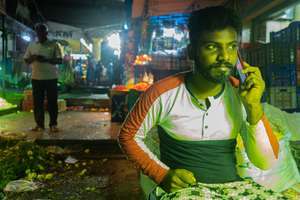This report presents findings from a study that seeks to understand current income levels of farmers in the state, and understand the necessary actions and focus areas that needs to be prioritised. This also provides an opportunity to assess strategies … Read More
Publications
Doubling Farmers’ Incomes: Strategies and Recommendations for Tamil Nadu
Ajay Tannirkulam, Suraj R Nair, Divya Mary | March 2, 2017
Performance of Models for Lending to Individuals in the Microfinance Sector
IFMR LEAD | March 1, 2017
This report presents findings from a study on the performance of models for individual lending in microfinance, conducted in Mysore and Allahabad.
Agents of Change: How the Human Touch is Bringing Digital Financial Services to New Customers in India
Shreya Chatterjee, Misha Sharma | February 28, 2017
In this report, the authors evaluate the factors currently shaping the adoption of digital financial services by emerging consumers in India and assess the crucial role that frontline banking agents play in helping to successfully transition their clients to digital … Read More
Evolving Financial Ecosystem for Micro-Merchants in India
Anisha Singh, Suraj Nair, Parul Agarwal | February 26, 2017
The digital revolution in India is well underway and there is a need to understand the adoption and usage of digital platforms on the ground. This report presents findings from a study of micro-merchants conducted in five cities: Jaipur, Kanpur, … Read More
Technology for Financial Inclusion: Repository of Technology Service Providers
Anisha Singh, Prachi Agarwal, Parul Agarwal | February 25, 2017
This report captures lessons from a landscaping study on digital financial services in India and includes a repository of technology service providers operating across different sectors.
Microfinance Institutions and Digitization in India
Anisha Singh, Prachi Agarwal, Parul Agarwal | February 24, 2017
In this handbook, we bring forth perspectives from consumers – those who are at the receiving end of digital financial inclusion. We profile 12 categories of consumers based on gender, region of work (rural/ urban) and age group, and highlight … Read More
Digital Financial Inclusion and Consumer Capabilities in India: A Handbook For Financial Service Providers
Parul Agarwal, Shreya Chatterjee, Prachi Agarwal | February 23, 2017
In this handbook, we bring forth perspectives from consumers – those who are at the receiving end of digital financial inclusion. We profile 12 categories of consumers based on gender, region of work (rural/ urban) and age group, and highlight … Read More
Optimizing Network Referrals to Identify and Recruit Creditworthy Entrepreneurs
Arun Chandrasekhar, Emily Breza and Francisco Munoz, Rupika Singh, Khushboo Gupta | February 22, 2017
The effort of screening quality loan applications and identifying potential borrowers can be very tedious and time consuming. This brief presents findings from a study that seeks to optimize a referral protocol to identify credit-worthy entrepreneurs.
To Pad or Not To Pad: Towards Better Sanitary Care for Women in Indian Slums
Supriya Garikipati, Camille Boudot | February 21, 2017
A number of programmes have recently been initiated to popularise the use of sanitary pads among women from low-income and marginalised segments, in developing countries. In this light, this article reviews prevailing menstrual practices in different contexts across India, as … Read More
Alleviating Constraints to Adoption of Improved Soil Fertility Management
Aprajit Mahajan, Andre Butler, Khushboo Gupta | February 20, 2017
This report presents findings from a randomized control trial of a new automated mobile system for delivering personalized fertilizer recommendations. This fertilizer decision support tool, Nutrient Expert (NE) for wheat, provides fertilizer input recommendations for specific fields and growing environments. … Read More
- « Previous Page
- 1
- …
- 14
- 15
- 16
- 17
- 18
- …
- 30
- Next Page »














